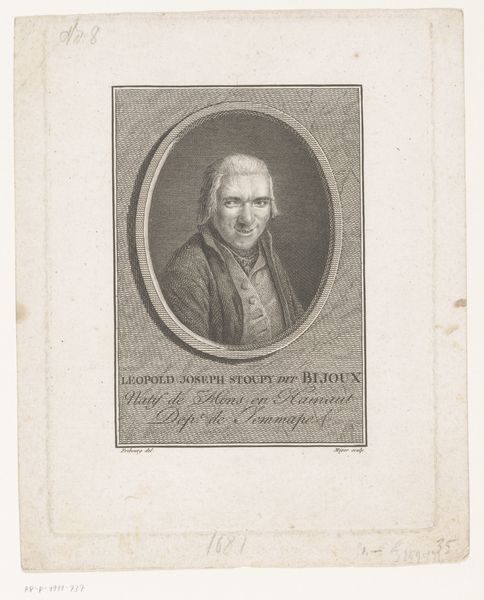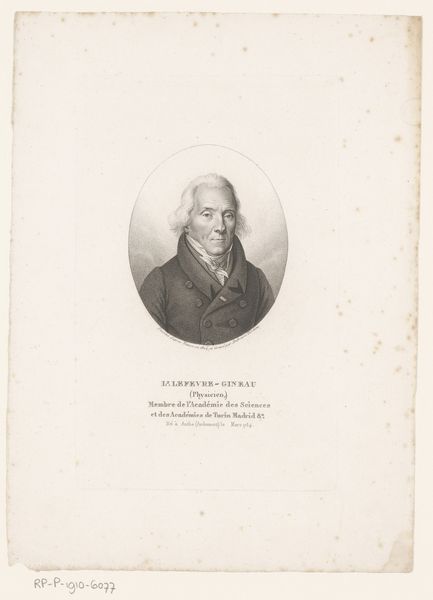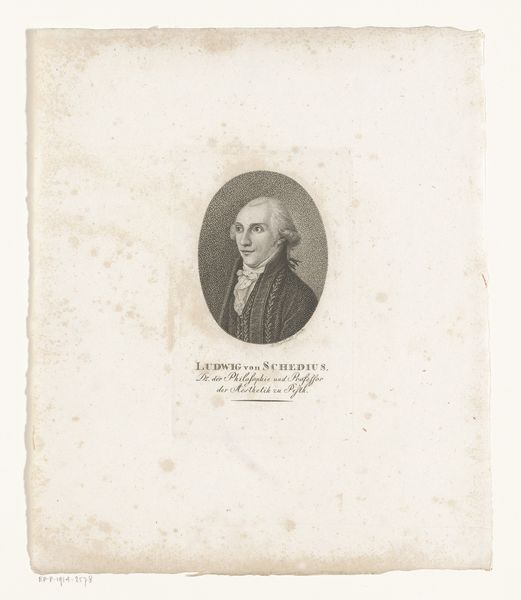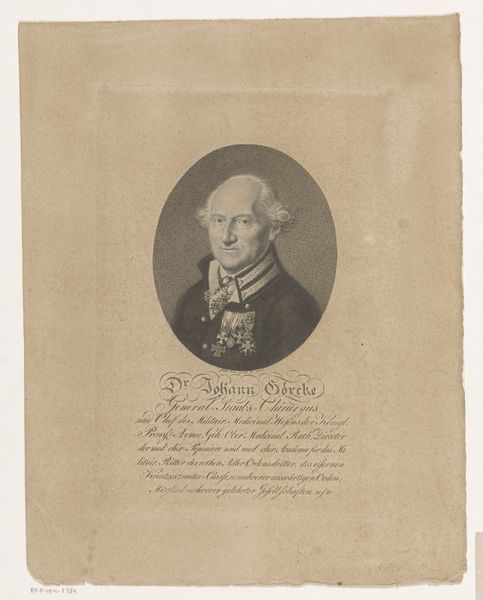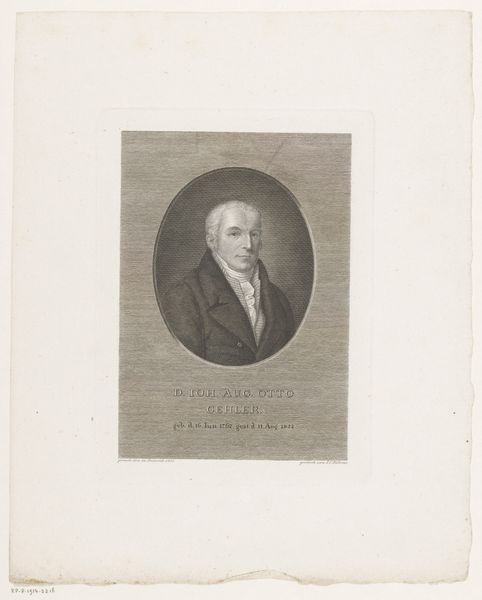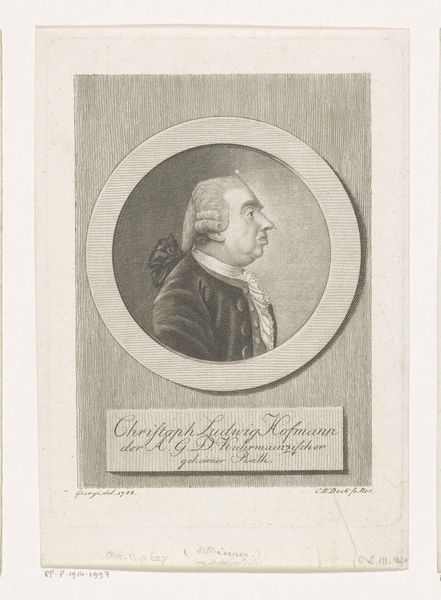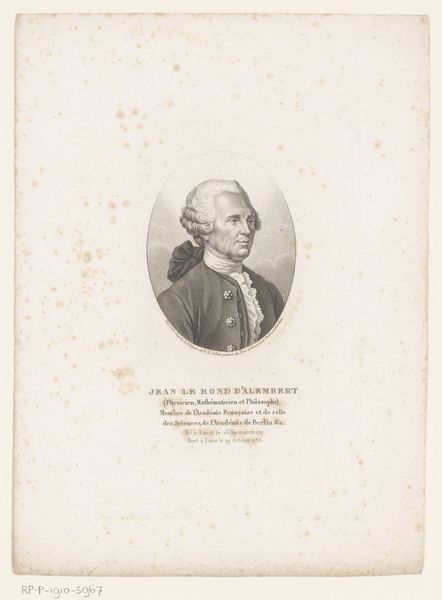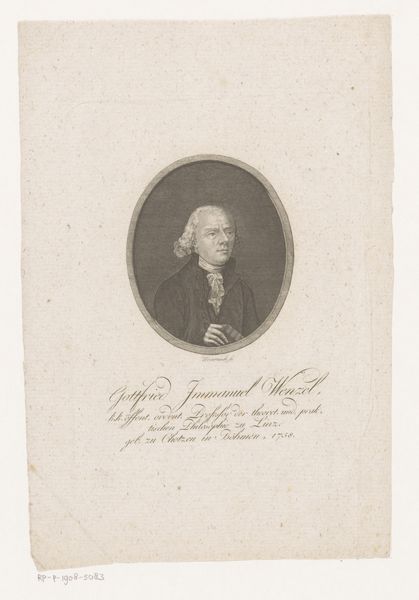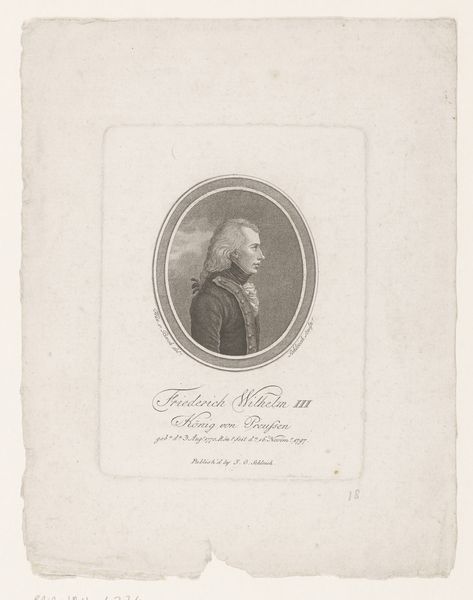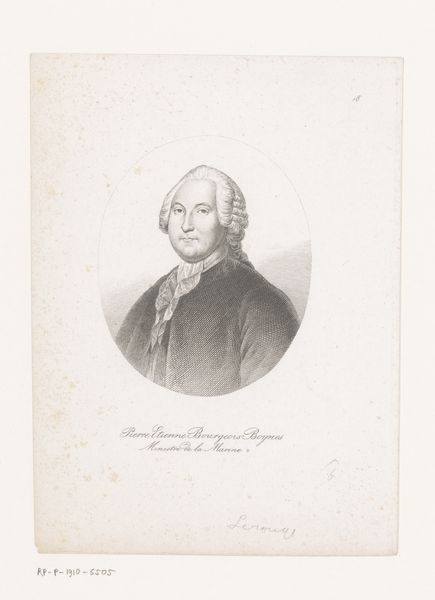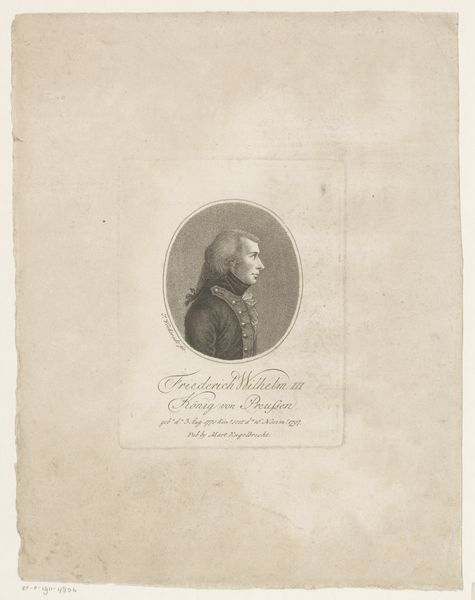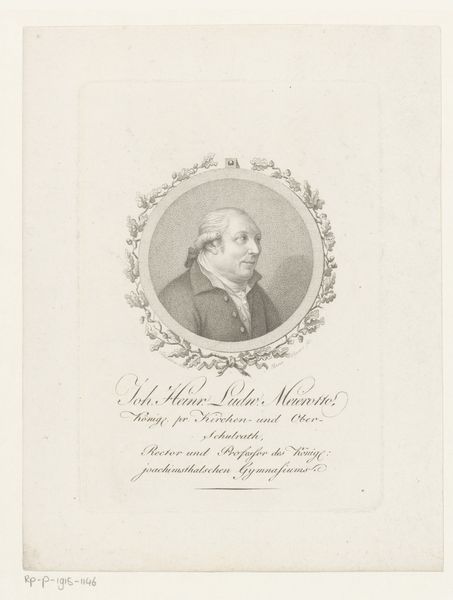
print, paper, engraving
#
portrait
#
neoclacissism
# print
#
paper
#
history-painting
#
engraving
Dimensions: height 195 mm, width 127 mm
Copyright: Rijks Museum: Open Domain
Johann Friedrich Bolt made this portrait of Christian Ludwig Mursinna using etching and engraving. These printing techniques rely on the controlled erosion of a metal plate to create an image. Consider the labor involved; the artist would have painstakingly covered a metal plate with a waxy, acid-resistant ground. Using a sharp tool, he would have exposed the metal, then bathed the plate in acid, biting away at the lines. For areas of tone, the artist would have used methods like aquatint to create a granulated effect. Each stage demands precision and skill. Bolt's choice of printmaking aligns with the subject's profession. Mursinna, a doctor and professor of surgery, lived in a time when advancements in medicine were increasingly documented and disseminated through printed images. This portrait, then, becomes part of that story, a meticulous and precise process mirroring the scientific observation of the era. This portrait reminds us that every artwork is the product of human effort and ingenuity. Appreciating the labor involved allows us to see beyond the image and understand its cultural significance.
Comments
No comments
Be the first to comment and join the conversation on the ultimate creative platform.
